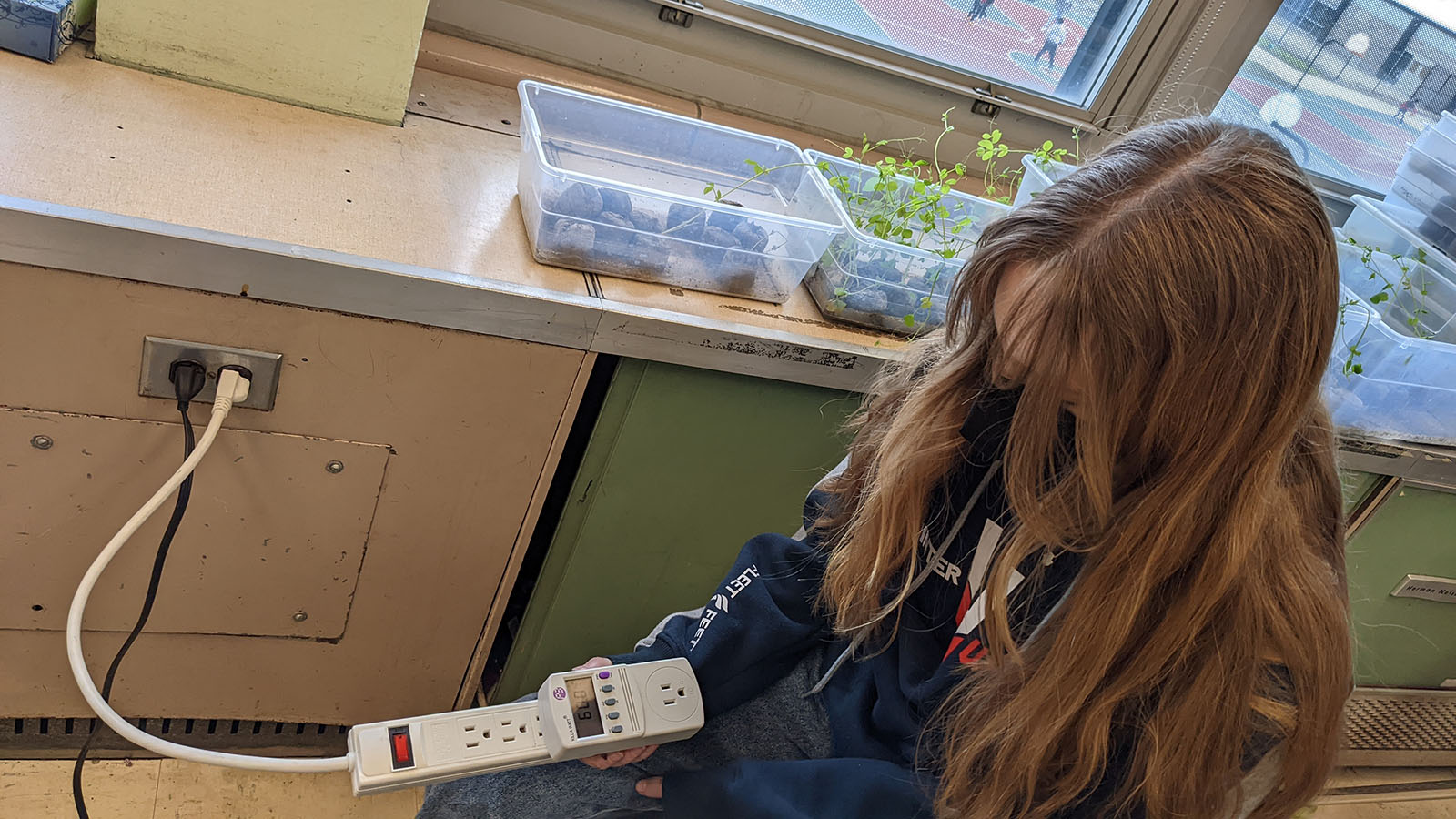
Skinner North Classical School: Taking Charge of Energy Use
By Clare Zhang
When Zach Schroeder was teaching the civics curriculum to his seventh and eighth grade students at Skinner North Classical School in Chicago, the discussions kept coming back to environmental issues.
“They didn’t just want to go through the motions and do a school project — it was real for them,” Schroeder said. “I wanted to put experts in their hands and let them pick at their brains and find out. And they were so good at doing that.”
Based on their expertise, Green Schools mentors YC Chua, a graduate student at Northwestern University, and William Roberts, Chief Operating Officer at Engen EPP, developed presentations tailored to what the students wanted to learn more about.
They began by discussing how change has occurred historically, hoping to give the students optimism about the future and their ability to make an impact on the environment, Chua said.
“[The students] get inundated with the news, and overwhelmed about what they can do,” Schroeder said. “I think this was very empowering for them to see that there are specific steps they can take.”
This led into a materiality assessment, where the students thought about aspects of their own lifestyles that they could make more sustainable and researched which of these would have the greatest impact.
This holistic exploration led them to consider everything from students’ modes of transportation to school to the amount of food waste in the cafeteria. Given the amount of time they spent indoors and the magnitude of energy that goes into heating and lighting, the students decided to focus on improving the energy efficiency in the school building.
“Our problems stem from the fact that every creature utilizes energy, and how we use it has gotten out of line,” Roberts said.
To investigate the school-wide energy usage, the students broke up into teams and covered different rooms, using thermo sensors and meters funded by an Illinois Green Schools Project mini-grant. They measured heat loss and the electric energy usage of current power strips.
The students then installed newer and more efficient power strips themselves and took measurements again to calculate the electricity saved. Chua connected the classes to a community relations professional at the electric utility ComEd, who sent them the school-wide energy usage data to analyze.

“Working in the bureaucracy of a giant public school system, it can be hard to get things like the electricity bill,” Schroeder said. The newfound connection to ComEd will allow Skinner North to continue looking at the changes in electricity usage in the coming years.
They also partnered with mentor and energy field specialist Justin Johnson to get the school’s fluorescent lights replaced with LEDs, which they are still looking to set a date for.
Schroeder’s classes are also using their project to educate their fellow students. They plan to present to the sixth graders at Skinner North about their project and the energy savings results from the new light bulbs.
“If you can capture [students] and give them a practical semblance of how sustainability works, because it’s such an abstract concept, I think as they flow into society they will bring the concept with them and change the world for the better,” Chua said.
